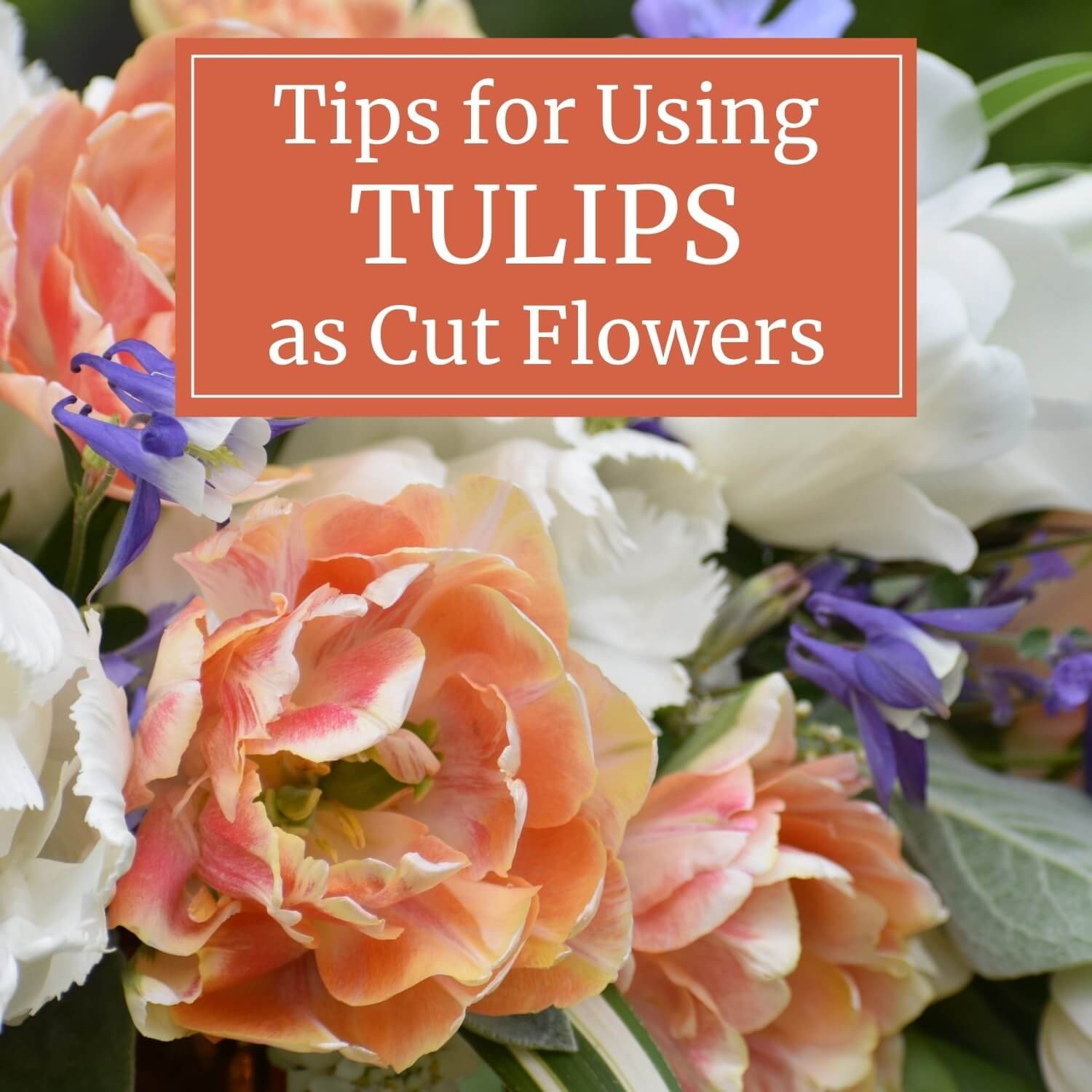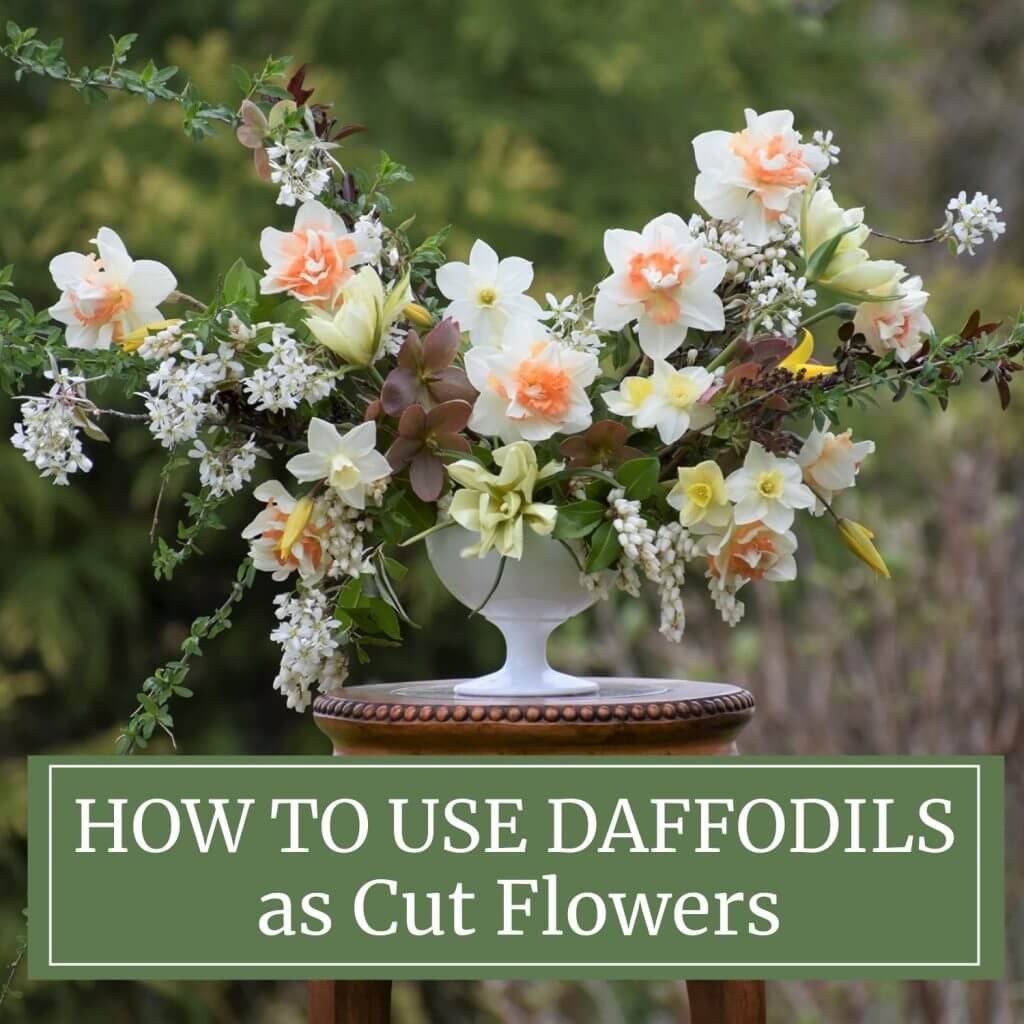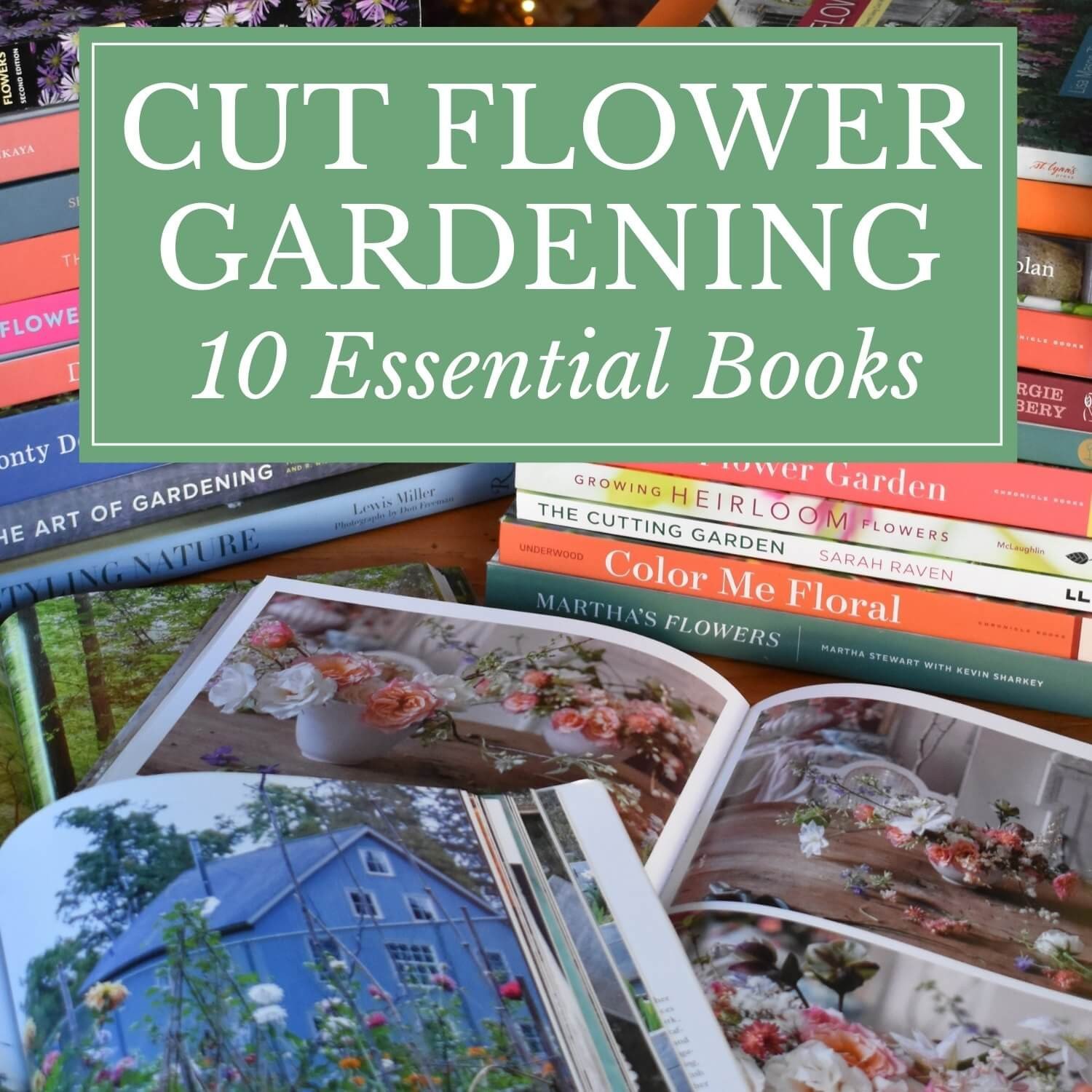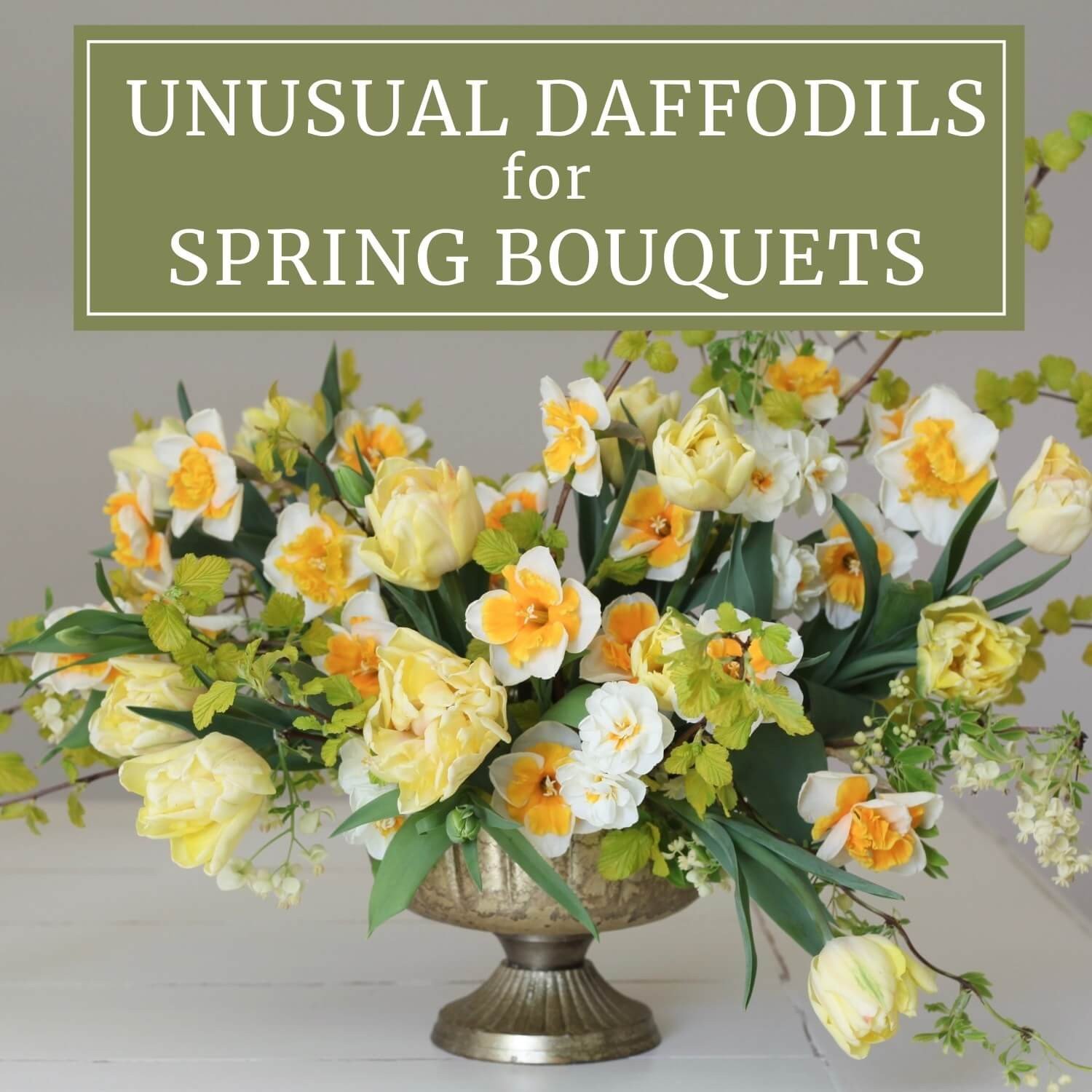
Best Techniques for Cutting Daffodils, Tulips, and Hyacinths

Spring is my favorite time of year. The bird song is loud and clear, the fruit trees are covered in blossoms, and the garden is blanketed in a carpet of daffodils, tulips, and hyacinths. I’m not sure whether the longing for warmer weather makes spring flowers all the more lovely, or if it’s indeed the blooms themselves that I love most.
If daffodils bloomed in September would my heart still swell with the joy when the first Dutch Master opened? Would the squeak of tulip foliage sound as delightful in November? Would hyacinths smell as sweet in the heat and humidity of August? I suppose I’ll never know. All I do know is when they're in bloom, I want to pick every single stem.
Since the beauty of spring flowers is fleeting, it's paramount that I get the longest vase life possible from each and every bloom. Here are the best techniques for cutting daffodils, tulips, and hyacinths so you can enjoy a long vase life as well. 
Tips for Cutting Daffodils
When daffodil blooms first emerge, the buds are held straight up in line with the stem and no color is visible. This is often referred to as the “pencil stage,” and daffodils harvested at this stage will never fully open. If you wait just a couple days, the bloom head will drop, and the color will become clearly evident. This is called the “goose neck” stage, and it’s the ideal time to pick single daffodils. Double daffodils should be harvested a bit later, when they are half open.
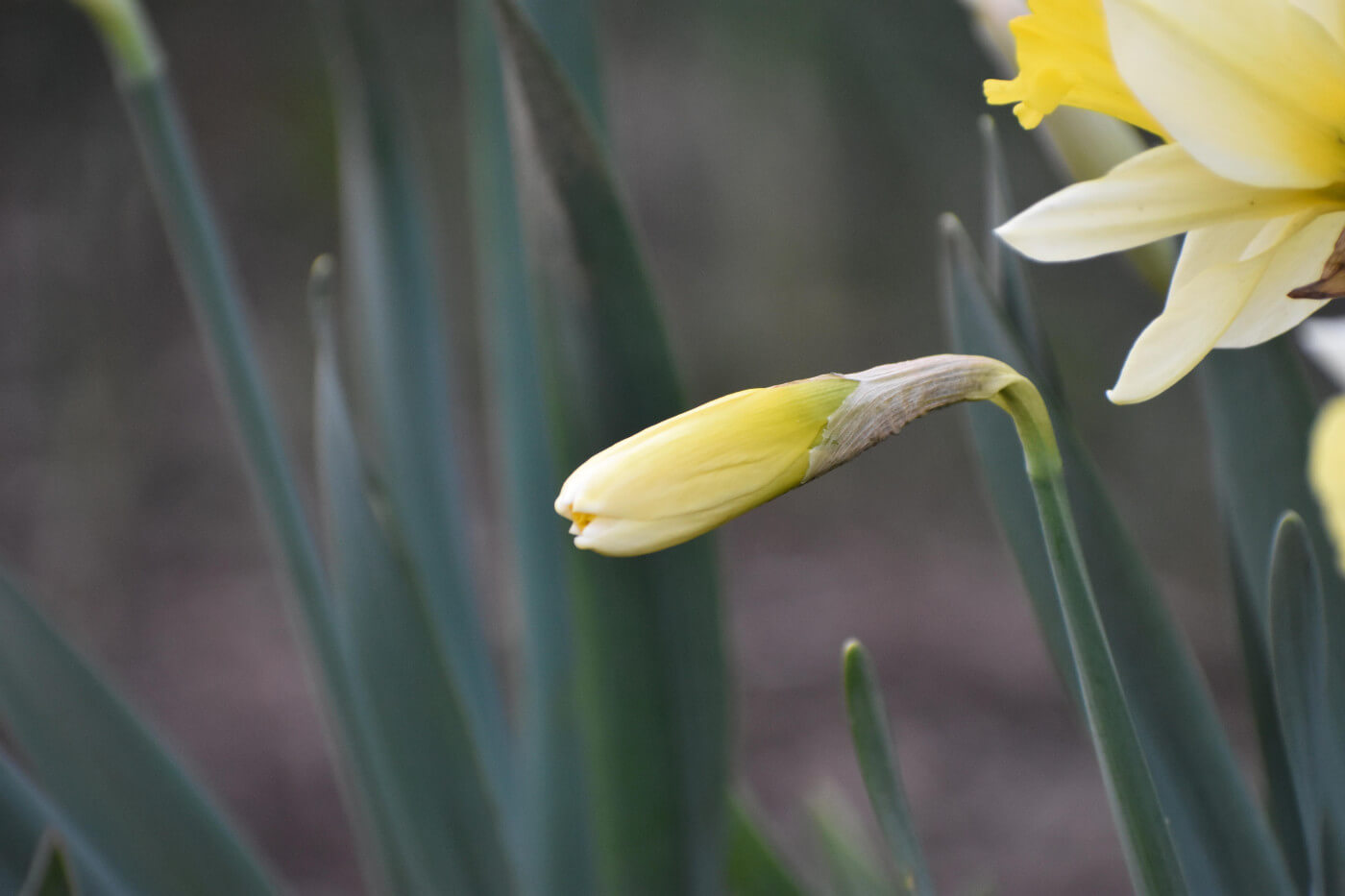
Harvest daffodils by pulling the stems rather than cutting them. It’s best to wear gloves for this task, since some people can experience itching or a rash from the sap they emit. Point your thumb down toward the earth, reach all the way to the base of the stem, and pull straight up. Using this technique ensures the longest stem length, and less sap is released from the stem.

The sap that daffodils secrete is toxic to other flowers (especially tulips), so they should be conditioned separately before being used in mixed bouquets.
To condition daffodils, place the stems into cool water and let them sit for three hours. During this time, the sap will run out from the stem. After conditioning, dump out the initial water, wash the vessel, and refresh the vase with new water. Now your daffodils can safely be paired with other blooms. Remember that each time you make a fresh cut the sap will flow again. So, if you're working on a free form design, cut the varying stem lengths required for your piece prior to conditioning.
Watch our video on how to harvest and condition daffodils HERE.
Tips for Cutting Tulips
Tulips that are grown for cutting are usually treated as annuals, because the best way to harvest the flowers is to pull them out of the ground with the bulbs still attached. This allows you to store the flowers without water, and also ensures the longest stem length. If your soil is compacted, loosen the area around the tulip bulbs with a pitchfork. Then, reach down to the base of the stem and pull out the entire tulip with the bulb attached.

If you are harvesting tulips for personal use, they can be cut at any stage. However, if you plan to sell the tulips, store them dry in a cooler, or want to ensure the longest vase life from your stems, they should be harvested in bud stage.

Single tulips are ready for harvest when the color is evident on the bud. Double and parrot tulips are ready for harvest when the bud is fully colored but not yet open.

If you want to store the tulips leave the bulb attached and wrap them in bunches of 12 in brown paper. Store them upright in buckets, or flat in crates being sure to alternate the bloom heads in the crates. Store them at 35°F for up to one month.

When you’re ready to arrange the tulips remove them from storage, cut off the bulbs, and rehydrate them in a bucket of water. The tulips will look horrible when you pull them out of storage. Don't worry, this is completely normal. Just be sure to leave the stems wrapped in paper while rehydrating. If the paper is removed prior to rehydration the stems will not remain straight.

Tulip stems continue to lengthen after harvest. When working them into an elaborate design, anticipate the stems growing and sink them deeper into the vessel. Additionally, adding floral preservative into the water will help maintain their vibrant color.

Watch our video on how to harvest, store, and condition tulips HERE.
Tips for Cutting Hyacinths
As with tulip, hyacinths that are grown specifically for cutting are treated as annuals and the entire bulb is dug up. Always wear gloves when working with hyacinth bulbs. They can cause skin irritation that persists for many hours. Harvest hyacinths in colored bud stage but before any of the florets have opened. Dig up the bulbs with a pitchfork or shovel being careful not to injure the bulb.

Then rinse off the soil and cut off the four sides of each bulb leaving the bottom basal plate intact.

It should look like one thick, long stem when you're done. I’ve had some hyacinths last almost 3 weeks when harvested in this manner.

Are you feeling inspired to plant more spring blooming bulbs after reading this article on the best techniques for cutting daffodils, tulips, and hyacinths? Then shop our complete selection of bulbs HERE.


